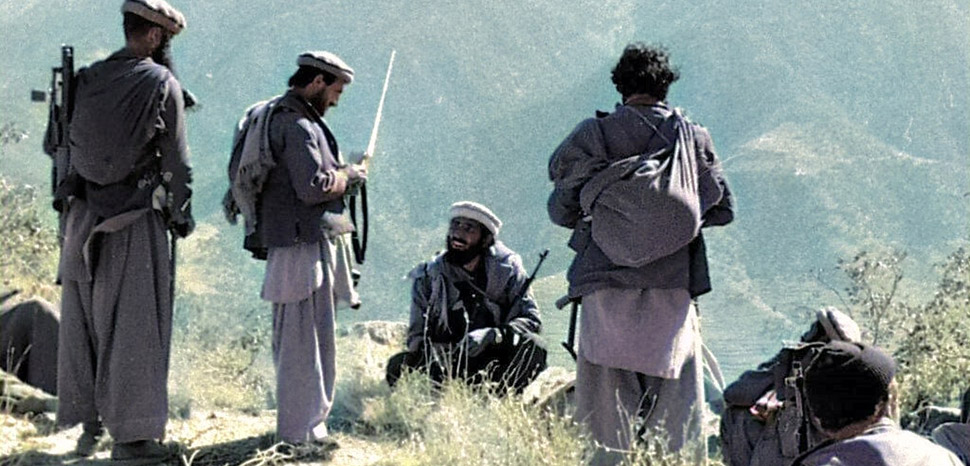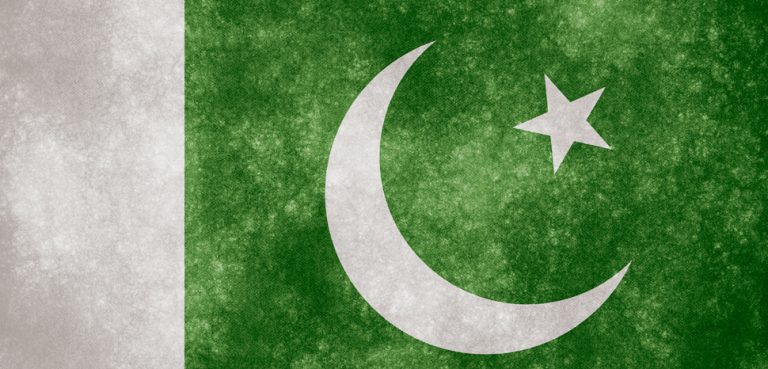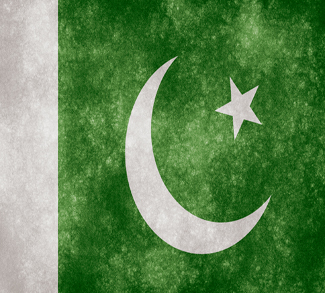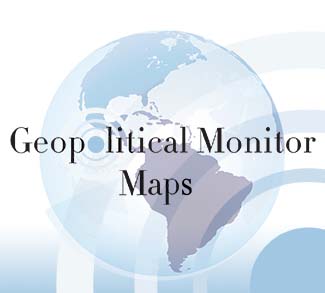Online and print spaces are replete with commentaries on terrorism in Afghanistan-Pakistan. However, it is worth exploring where this worrying issue arose from. The focus here is particularly on the poorest, least educated and most under-developed region: the Pakistan-controlled ex-Federally Administered Tribal Areas (FATA)—now merged into Khyber Pakhtunkhwa (KP). This will elucidate the root cause of Islamist radicalism and terrorism in the geo-strategically vital Pashtun region.
Most ‘knowledge’ produced about Pashtuns since colonial times has been one-sided and political. In the British era, this knowledge stereotyped them as a ‘martial’, ‘savage’ people, rather than reflecting their experiences of lying at the entry point of foreign invaders into India, resisting incursions into their land, and thus forcibly becoming used to wars.
Post-British too, much of the knowledge generated about the Pashtuns has not portrayed them as a mostly disadvantaged ethnic minority in Pakistan. Instead, it has linked their ethnicity to Islamist terrorism as a cause-effect relationship of the Pashtuns helping the jihadists under their social code, Pashtunwali.
Both the above unidimensional narratives reflect the truth of the French theorist Michel Foucault’s ‘power/knowledge’ theory. He believed that knowledge and power are connected. The dominant knowledge is that of the powerful who possess the means of producing and disseminating the knowledge that suits their interests. As it is repeated everywhere, people widely believe it to be ‘correct,’ and this perpetuates the power of the powerful. On the other hand, the knowledge of the powerless, however, factually correct, gets marginalized.
The ex-FATA before the merger until 2018 were called ‘ilaqa ghair’, meaning lawless or foreign territory. They comprised seven ‘agencies’, namely, Bajaur, Mohmand, Khyber, Orakzai, Kurram, North Waziristan and South Waziristan, as well as six ‘Frontier Regions (FRs)’: FR-Peshawar, FR-Kohat, FR-Bannu, FR-Lakki Marwat, FR-Tank and FR-Dera Ismail Khan.
Since 1901, British colonizers had placed FATA under a parallel political, legal and administrative set-up minus fundamental rights, called the Frontier Crimes Regulation (FCR), which Pakistan retained. In these circumstances, the ancient unwritten code of honorable conduct, Pashtunwali/Pukhtunwali, maintained the social structure of the region. This article delves into Pashtunwali and the history of the territory to uncover how the Pashtun region in general and ex-FATA in particular became the hotbed of terrorism.
Pashtunwali and Terrorism
To begin with, confusion surrounding Pashtunwali and terrorism should be cleared. Pashtunwali’s ethno-symbols like patt (honor), shegara/khegara (kindness) and toora (bravery), together form the acronym ‘Pashto’ (southern dialect) or ‘Pukhto’ (northern dialect). This is a unique ethnic boundary marker that imparts this identity of distinctive pride and salience that supersedes everything else.
Concerning the armed struggles undertaken by the Pashtuns throughout history, it is important to understand that the inspiration to defend one’s land comes from Pashtunwali, which is more pre-Islamic than post-Islamic. This factor automatically makes the vital component of the Pashtun ethnic identity, that is, Pashtunwali, secular in nature, since it predates all theories of Islamism.
Therefore, Pashtunwali can only inspire national wars of liberation, and has not served as an inspiration behind jihadist militancy, as the Pashtun nationalist warrior-poet Khushal Khan Khattak wrote about its secular values in the seventeenth century.
Furthermore, given their geo-strategic location, the Pashtuns have been subjected to invasions by Alexander the Greek, the Mughals and the British, which compelled the former to fight to defend their land. This is also clear from Pashto ethno-symbolic poetry and music. For example, the Pashtun national anthem opens with, “it is our history that we have been traveling through blood.”
Following this forced entrenchment of war, these armed struggles, even if led against the non-Muslim British colonialists by a Sufi mystic, the faqir (pauper) of Ipi from FATA, were not laced with pan-Islamist terrorist propaganda. The wars have remained nationalistic even after the Pashtuns embraced Islam, as Pashtunwali’s tenets in themselves require the people to defend their land.
FATA Falling under Pakistan
If the causes for political violence in the geo-strategically significant region are not attributable to indigenous factors, the broader picture requires in-depth investigation. Historically, the British colonialists created FATA and imposed the FCR. As the region lay between British India and Afghanistan, the core of the British Empire was shielded from Tsarist Russia’s possible aggression by this mountainous buffer.
It is evident that this region has been viewed historically through the lens of security. Furthermore, before leaving India, the British partitioned it, causing the birth of Pakistan. Certain tribal elders from FATA reportedly signed secret instruments of accession with the Dominion of Pakistan. Hence, the crucial territory fell under Pakistan’s control, which decided to keep its colonial status intact, and named it FATA.
The situation of the ex-FATA with regard to militancy cannot be understood without first understanding Pakistan, which the region became a part of, and the policies the state adopted. Pakistan, in itself, was a classic example of a “colonially created state with [a] culturally heterogeneous population,” called a “plural society.” The country’s civilian administration was dominated by two ethnic groups: the Punjabis and Mohajirs. In addition, the military was also controlled by the Punjabis, along with significant Pashtun representation. This was also a colonial legacy, as the British had designated both these groups among the ‘martial races.’
The process of ‘Punjabisation’ of the Pakistani state intensified as the capital was moved from Karachi in southern Pakistan towards the northern Punjabi region. Military regimes also increased Punjabi influence gradually. Moreover, the secession of East Pakistan as Bangladesh made the Punjabis the dominant ethnic group of Pakistan with around 56 percent of the population. It also allowed them to fill the military posts left vacant by Bengalis, thus making the military overwhelmingly Punjabi-dominated.
The military is Pakistan’s most powerful and dominant institution, and is practically in charge of the country. According to senior Pakistani defense analyst Hasan Askari Rizvi, the military “does not tolerate civilian interference” in “any issue of strategic national importance.” These issues include devising foreign policy, especially vis-à-vis neighboring countries like India and Afghanistan.
Importantly, it has been argued, “the security and foreign policy of Pakistan are the security and foreign policy of the ruling ethnic groups, particularly Punjabis.” Therefore, the above discussion leads to the conclusion that the regional policy of Pakistan is determined by the Punjabis dominating the military, considering “foreign and national security policy as their institutional prerogative and strategic imperative.”
As a geo-strategically significant fact, Pakistan’s western neighbor, Afghanistan, has historically problematized the former’s claim that the Durand Line was a permanent international boundary. Afghanistan holds that it was only meant to define the respective spheres of influence of the old Afghan Kingdom and British India, and never meant to act as an international border, thus rejecting the division of ethnic Pashtuns. The Afghan stance has understandably caused Pakistani foreign policymakers to be concerned about the rise of potential irredentism, leading to the breakup of Pakistan.
Concerns over Pashtun Nationalism
After 1973, Pakistan believed the then Afghan President Sardar Daoud was sponsoring Pashtun separatists inside Pakistan, to help them carve out an independent Pashtun state from within Pakistan-administered territories, to be called ‘Pashtunistan/Pukhtunistan.’ This scenario posed serious dangers for the integrity of the Pakistani state. It could deprive the country of more than half of its territory, by also possibly facilitating the secession of the southwestern province of Balochistan.
Given the perceived hostile India already present on the eastern side—the same country with which Pakistan had the Kashmir dispute and that had also helped East Pakistan secede—the overall regional scenario for the Pakistani state was not a desirable one. The situation, if left unchecked, could lead to the encirclement and subsequent disintegration of Pakistan by India and Afghanistan.
Importantly, both Punjab as the most populous, core province, and the Punjabi-dominated military as the strongest institution, had substantial dependence on the territorial integrity of Pakistan. The peripheral provinces afforded them natural and monetary resources required for their sustenance and prosperity. Moreover, the military’s recruitment had also been primarily from Punjab which was the province of the ethnic majority, as opposed to peripheral ethnic minority areas like FATA.
Keeping in view the ‘proletarianized’ politico-legal status of FATA in an “ethnocratic” state, they could serve as a strategic space for countering the Afghans who were allegedly encouraging Pashtun nationalism inside Pakistan, due to the region’s geographical proximity with Afghanistan.
As mentioned earlier, Pakistan perceived President Daoud to be covertly working for the creation of an autonomous Pashtunistan in the early 1970s. The Pakistani security establishment was aware that, notwithstanding intra-Pashtun conflicts, the “notion of the ethnic and cultural unity of all Pashtuns has long been familiar to them as a symbolic complex of great potential for political unity.” This is especially true considering they had once been politically united already in 1747 by King Ahmad Shah Durrani, the founder of modern Afghanistan.
After the 1978 Communist Revolution in Afghanistan, subsequent rulers decided to perpetuate the nationalist policy, while also receiving Soviet backing. In 1979, the Afghan Prime Minister Hafizullah Amin explicitly called for ‘Greater Afghanistan’ by reincorporating Pashtun and Baloch territories under Pakistani control. He proclaimed, “[the Pashtuns and Baloch] want to live side by side, embrace each other and demonstrate this great love to the world at large [through their reunification in Greater Afghanistan].”
Pakistan Begins to Implant Radicalism
The Soviet invasion of Afghanistan in 1979 and the ensuing Islamist resistance provided Pakistan with a golden opportunity to counter the Afghan rulers’ nationalist policies and replace the Pashtun political ethnicity with political Islam.
Throughout the process, Pakistan was monetarily and materially backed by the United States, given its Cold War rivalry with the Soviet Union. It also received massive support from the Gulf Arab states who viewed the Islamist resistance in Afghanistan as a means to expand their Wahhabist influence through sponsoring ideological militants. Pakistan, for its own objectives, sought the installation of Islamist surrogate rule in Afghanistan, an aim for the fulfillment of which the adjoining FATA proved invaluable.
The region was already devoid of the state’s usual governance machinery and possessed a mountainous geography that offered ample space for high-quality militant training. Hence, the Punjabi-dominated Pakistani military establishment decided in favor of using the Pashtun ethnic minority’s land for its strategic objectives, orchestrating the anti-Soviet war. This was further enabled by the fact that neither the army’s decision-making ‘corps commanders’ nor a significant number of foot soldiers ever belonged to the peripheral FATA, therefore the areas’ interests did not fare prominently in the military elite’s agenda.
It is pertinent to mention that the terrorism in the region has hitherto hardly been addressed from this ethnic perspective in the existing literature. This is despite the fact that the ex-FATA being an ethnic minority region and the Pakistani military dominated by the ethnic majority are both documented realities. The military itself has acknowledged the Punjabi dominance at 71 percent, though independent sources, as early as in 1987, claimed the figure to be 80 percent. This was when the third and fourth martial rules entrenching Punjabisation further had yet to run their course.
Nevertheless, as a result of the sponsorship of Islamism inside FATA, the secular tribal elders’ social authority was undermined in favor of the mullahs, whose role, previously, had been “restricted to mosques.” The non-existence of political parties in the region facilitated their rise further.
Thus, a mullah-military alliance was enabled, which helped the diffusion of centrifugal, ethno-nationalist forces in the region. This also prepared the ground for Islamist militancy through “purpose-built”, hate-preaching madrasas. Militants from all around the globe, including the would-be founders of al-Qaeda, were brought to FATA, and provided weapons and training in special camps to fight the Soviet and Afghan forces as a ‘holy war.’
During the same period, in this region of the Pashtun “sidestream ethnicity”, sectarianism was also encouraged by Pakistan’s military dictator, General Zia-ul-Haq—himself an ethnic Punjabi. He allowed the ‘mujahideen’ and Punjab-based Sunni sectarian militants to operate against the minority Shia Pashtuns of the Kurram agency.
Indeed, certain non-Punjabi mullahs and military authorities also played important roles during the 1980s in this strategic game played in FATA. One such figure was the ‘father of the Taliban,’ Mullah Sami-ul-Haq, who supplied human resources against the Soviets as the head of the most important madrasa, Darul Uloom Haqqania, in the now-KP. Another one was General Naseerullah Babur, who, as Inspector General of the Frontier Corps, had assisted the jihadist exercise.
However, the policymaking of the military—thus the state—was executed by the Chief of the Army Staff and his corps commanders, chiefly from the majority Punjabi ethnicity. Minorities such as Pashtuns did not supply a significant number of the corps commanders, with whom “much of the power in the Pakistani army rests”. In addition, none of the four Pakistani military dictators has been a Pashtun.
FATA Suffers the Consequences
It is evident that the military’s policies were and are not representative of minority ethnic groups’ interests. Successive heads of the Inter-Services Intelligence (ISI) agency that was orchestrating the anti-Soviet resistance issued statements such as “Kabul must burn” and “Afghanistan is a blank paper and it would look like whatever we write on it,” caring little about the repercussions of their Afghan policy for the Pashtun region.
These statements made explicit Pakistan’s plans for Afghanistan. Pakistan required the services of Islamist proxies against the communist government, given the consistent irredentist stance of the successive Afghan governments—always headed by Pashtuns. This led Pakistani policymakers to conclude that Afghanistan’s stability could prove dangerous for their own state’s integrity.
Therefore, the “burn[ing]” of Kabul and “writ[ing]” of an Islamist script on the “blank paper” of Afghanistan were primarily executed from the land of FATA. This simultaneously injected radicalism into the traditional tribal society and altered ethnic identity in the process.
In other words, the retaining of the ethnic Pashtuns’ colonial division, through abusing Islam, safeguarded the interests of the Punjabi-dominated state. As it has been observed, “what is a gain for Pakistan is a loss for Sindh.” The same could be said for the broader Pashtun region and society; in this case, the ex-FATA.
During the anti-Soviet war from 1979 to 1989, the madrasas built inside FATA and other western minority regions such as the adjoining KP and Balochistan were used to ‘educate’ the Afghan refugees’ and local Pashtuns’ children. Indeed, some of them joined the Islamist resistance. Later, they came to be known as the Taliban (seminary students), who had been infused with jihadist ideology.
These extremist by-products of the anti-Soviet episode proved useful for Pakistan in the 1990s, when its favored ‘mujahideen’ could not prove capable of installing a sustainable Islamist government in Kabul. Thereafter, as a more ‘effective’ alternative, the Taliban were brought to power for providing ‘strategic depth’ to Pakistan in the event of war with India. This was evident from Pakistan’s prompt recognition of their tyrannical government in 1996.
9/11 and the Ensuing Disaster
The Taliban, due to their ideological proximity with violent extremist organizations such as al-Qaeda, provided them with safe havens. The result was the planning and execution of the September 11, 2001 attacks in the United States. Subsequently, the U.S. bombed the terrorists’ bases in Afghanistan. The Taliban, along with their al-Qaeda allies, escaped to the adjoining FATA, with the consent of the Pakistani state, heralding a new era of untold hardship for the local populace.
Given that the people of FATA already were greatly deprived of fundamental human rights such as literacy, proper governance and justice, the jihadists found sanctuaries in these rugged terrains. This state-retained colonial “legal dualism”—in addition to the existing radicalism among mullahs and certain individuals acquired from the 1980s’ anti-Soviet jihadism—aided these militants.
They systematically began to target the local tribal elders who were opposed to their presence, thereby throwing into disorder the tribal society. The Taliban intended to fill the subsequently created social vacuum themselves, as they did through the formation of the ‘Islamic Emirate of Waziristan.’
In their self-defense according to Pashtunwali, the locals formed anti-Taliban lashkars/lakhkars (armed groups); however, the Pakistani state offered little support while the Taliban were attacking these lashkars. Instead, the state appeared to view the happenings as ‘necessary,’ so the jihadists could establish bases in FATA. From those bases, they had to attack the Coalition and Afghan forces, and subsequently rise to power in Kabul, as in 1996. This would fulfil Pakistan’s regional objective of suppressing Pashtun nationalism.
Thus, the Punjabi-dominated “military-rentier state”—simultaneously termed as a ‘frontline ally’ by the U.S. in the War On Terrorism—outsourced FATA to terrorists against the will of the largely secular Pashtun inhabitants, executing a Janus-faced policy. It is worth mentioning that the majority of the sectarian-leaning Pakistani Taliban active in FATA have also been from Punjab. Thus, the Pakistani military personnel shared province, ethnicity and the characteristically Punjabi anti-India mindset with the jihadists.
In the whole process, the people of FATA have suffered the greatest, first at the hands of the terrorists, and then during military operations through ‘collateral damage’ and forced displacements. The Pashtuns have been excluded from the GWOT by the Pakistani security establishment, leading to the “virtual collapse of the anti-terror strategy” in the region.
Instead, to the outside world, the Pashtuns have been presented like the American aboriginal Sioux, who were supposedly in ‘need’ of the state to ‘save’ and ‘civilize’ them. Their case bears resemblance to cases of colonization and one-sided offensives launched against defenseless aboriginal peoples of America and Australia.
Conclusion
In retrospect, the Punjabi-dominated establishment’s abuse of Pashtun land, considering it an outlier, has not come without costs. The situation resembles the outcome of the ‘prisoner’s dilemma’ for Punjab as the province itself has become more radicalized than any other part of Pakistan, with several masterminds of terrorism based inside it.
Moreover, the military itself has had to endure resistance from certain sections of the Taliban who launched attacks on its installments. The ethnocratic state’s instrumentalization of violence for domestic and foreign policy objectives—facilitated through the retainment of colonial governance system and ban on media in the then-FATA—also, in turn, created space for the anti-state Taliban, labelled ‘Bad Taliban’.
However, it is the primordially secular Pashtuns, especially those of the ex-FATA, who have most been at the receiving end, both physically and culturally. Their lives, lands and culture since far too long have been compromised by the “ethnic absolutism” and hegemony of Punjab.
As mentioned in the introduction, indigenous voices have been greatly neglected in the literature, rather there is widespread misrepresentation. For example, it has been claimed that FATA’s Pashtuns provided refuge under Pashtunwali to the on-the-run jihadists escaping from Afghanistan in 2001.
In reality, this was scarcely possible in the tribal society that was more concerned with the maintenance of local peace than with armed struggles of international jihadists. Moreover, aiding the Islamist militants under the code was hardly possible, considering that they were endangering the very land that Pashtunwali’s tenets require the Pashtuns to protect at all costs.
Most research on regional terrorism, however, has not accorded importance to indigenous perspectives. Therefore, it is important for policymakers to listen to marginalized voices that challenge the dominant narrative before arriving at conclusions that impact the lives of millions.




